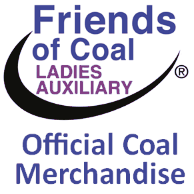Miner Recollections: Harry E. Warnick and Peter J. Matthews

June 10, 2020 - Each week “Miner Recollections” will spotlight Georges Creek coal heritage, and the sacrifices made by those who mined it, by drawing upon biographical sketches, family narratives and historical research.
The end of World War II marked an acceleration of the gradual reduction in demand for Georges Creek coal that had taken place over the previous four decades. At the dawn of the 20th century, more than 5,000 men were employed by the coal industry in Allegany County. By 1935, that number had dropped to 2,200, and declined precipitously thereafter. The total number of men employed in coal production was 1,620 in 1940,1,041 in 1945 and 585 in 1951, a 90% decline from the peak years of coal output.
A variety of factors accounted for the massive reduction, the most prominent of which was the inability of local coal companies to compete with the larger mechanized coal mines in West Virginia and Pennsylvania. A major milestone in the retreat occurred on March 1, 1944, when Consolidation Coal Co. sold its remaining coal-producing properties in Allegany County to William E. Jenkins and William S. Jenkins at a fraction of their former value. During the same year, the Western Maryland Railway bought the Consolidation Coal Co.’s C&P Railroad, and the abandonment of Allegany County by the Consolidation Coal Co. was complete. Up until 1900, Consolidation Coal Co. (now known as Consol Energy, a Fortune 500 company) operated exclusively in Allegany County.
Another factor in the decline of employment in the local coal industry was the advent of surface mining which began in Allegany County in 1941. Surface mining (also known as strip mining) was highly mechanized, making it less labor-intensive than underground coal mining. By 1955, surface mining accounted for nearly 50% of the coal production in Allegany County. A work slow down ordered by United Mine Worker’s President John L. Lewis in 1950 and 1951 to stabilize employment did not improve the situation. The availability of oil and natural gas for heat and the introduction of diesel locomotives in 1953 only added to the woes of the local coal trade. The increase in demand for coal during the war had only delayed the inevitable. Men who lost their jobs in the local coal industry were forced to either take factory jobs (which usually meant relocating to industrial centers in bigger cities) or go to nearby West Virginia or Pennsylvania to find work in the coal mines. Jack Warnick and Pete Matthews went looking for greener pastures.
Harry Ernest “Jack” Warnick was the 11th of 12 children born to Joseph William “Blacksmith Bill” Warnick and Laura Virginia Willis. Born on Oct. 21, 1924. at Warnick Siding, West Virginia (near Barnum), Jack Warnick was raised in the midst of coal mining culture. His father had plied his “smithy” trade in the local coal mines since he was a young man in his 20s.
Peter Junior “Pete” Matthews was also raised in a large family. Born on May 1, 1925, in Pekin, Pete was one of 11 children belonging to James Matthews and Verona (Snyder) Matthews. Jack Warnick married Pete Matthews’ sister Viola Laura Matthews; the marriage produced four children, one of whom died at birth.
According to his World War II draft registration card filed in 1943, Jack Warnick was employed by the Jenkins Coal Co. in Barton. Pete Matthews’ draft registration card, recorded the same year, showed that he was working at the Ort Bakery in Midland.
In February 1951, the brothers-in-law decided to go to the Elk Lick area of Somerset County, Pennsylvania (near Salisbury), where they found work in George Bowman’s Boynton Mine. While working at the Boynton Mine, Warnick and Matthews were living on a nearby farm owned by Raymond Moss. The decision to move to the Salisbury area precipitated a mystery that the two young miners would take to their graves.
On Saturday night, May 5, 1951, Jack Warnick and Pete Matthews decided to explore the recently opened John Tressler Mine located in Elk Lick Township, only 600 yards from the Boynton Mine. The two miners had said that they were going to inspect the Tressler Mine before seeking employment there. When the pair did not return on Saturday night, Jack Warnick’s wife asked her brother-in-law Fred Warnick to locate the two men. After not finding them in the mine in which they were employed, Fred Warnick went to the John Tressler Mine, where he discovered the mangled bodies of his brother Jack and Pete Matthews, early on Sunday morning. The coroner estimated that the time of death was sometime around 11 p.m. on Saturday.
The bodies of the two men were removed to the Thomas Funeral Home in Salisbury, where they were held pending the conclusion of the inquest. It was determined that the deaths of Warnick and Matthews were caused by the detonation of 3-1/2 sticks of dynamite, which was somehow set off by a blasting cap. Apparently, the dynamite was inside of a wooden box, evident from the wood splinters that were found scattered among the debris from the blast. Matthews had taken the worst of the explosion; the investigation concluded that he was probably holding the wooden box when it blew up. Jack Warnick’s body was found 30 feet away. What triggered the detonation of the blasting cap was never determined.
According to the Somerset Daily American newspaper, the bodies were released to the Eichhorn Funeral Home in Lonaconing to prepare for burial. The Cumberland Evening Times reported that the remains of both miners were taken to the home of Matthews’ mother on May 8, 1951. A joint service was held for the two victims at 2:30 the following day at the Lonaconing Assembly of God Church, with the Rev. C.E. Hunt, pastor, officiating.
Besides his widow, Viola, Jack Warnick left a son and two daughters, all of whom were 5 years of age or younger. Jack Warnick’s widow, Viola, later married Cecil Beeman, with whom she had four more children.
Pete Matthews was unmarried. His mother, Verona, suffered through a gauntlet of tragedies from 1948 through 1951. On Nov. 19, 1948, her husband, James Matthews, died after a prolonged illness. Two years later on Christmas Eve 1950, the family home in Midland was destroyed by fire. Afterward, Verona Matthews took up residency in Gilmore. Four months later the explosion in the John Tressler Mine took the lives of her son Pete and her son-in-law Jack.
•••
“Miner Recollections Volume Two 2019” is now available. This compilation includes 250 pages of stories, maps, and an updated list of deceased miners. Proceeds support the installation of a life-sized bronze statue and the educational landscaping that will surround it. Books are available at Armstrong Insurance in Frostburg or by contacting Polla Horn at jph68@verizon.net or Bucky Schriver at bucky1015@comcast.net.

























